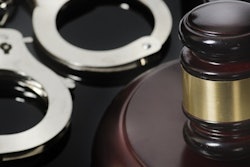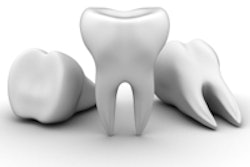
Post-treatment endodontic images can significantly enhance forensic identification, according to a study in the Australian Endodontic Journal (AEJ, August 2010, Vol. 36:2, pp. 87-94).
In fact, forensics experts say endodontic images have become increasingly important for post-mortem patient identification.
"As a forensic dentist, the radiographs become some of the most important aspects as a record comparison when trying to identify someone," said David Sweet, O.C., D.M.D., Ph.D., director of the Bureau of Legal Dentistry lab at the University of British Columbia. "But most forensic dentists would agree that endodontic films, the post-treatment films especially, are very key in doing our identifications."
The forensic dentist or odontologist's job is to compare the dental records of a suspected or known missing person with the dentition and oral structures of the deceased to determine the degree of correspondence. While written records are commonly used, they are prone to errors of transcription, recall, and interpretation, according to Alexander Forrest, M.D.Sc., an associate professor of biomolecular and physical sciences at Griffith University and co-author of the AEJ article.
“Dental treatment tends to leave radiographic evidence with detailed morphology that is likely to be unique.”
"In some cases, even when no such errors exist, insufficient detail is recorded in the written record to allow a person to be identified," wrote Dr. Forrest and his co-author, Henry Yuan-Heng Wu, B.D.Sc.
Radiographs, on the other hand, form "objective records of a person and derive directly from that person," they noted. In addition, they can be accurately duplicated by a different operator at a different time on the same patient.
The more detailed and distinctive the morphology recorded in an image, the better the basis for comparison with a similar radiograph of an unknown person to establish that both images come from the same individual, they noted. "Dental treatment tends to leave radiographic evidence with detailed morphology that is likely to be unique and therefore has high probative value in such a comparison," they wrote.
Radiographs of endodontic treatments are an especially good source of individuating features based on their distinctive morphology, they added -- in part because alteration of endodontic restorations happens less frequently than with intracoronal restorations. However, most general or specialist dentists take radiographs as a diagnostic tool but very seldom take post-treatment images, Dr. Sweet said.
"We have been using this technology routinely for quite some time and thought it should be put into the general dental literature rather than the forensic literature since the quality of the work we can perform really depends on the quality of the information and radiographs we get from dentists," Dr. Forrest told DrBicuspid.com. "We also knew that our stance on written dental records would be controversial, so by appealing to general dentists, we thought that we might improve the quality of records they keep."
Case study comparisons
Using four cases obtained from the forensic odontology service at Queensland Health Forensic and Scientific Services, Drs. Forrest and Wu outlined how images taken after a root canal can provide a wealth of morphological detail for radiographic comparison with post-mortem images when trying to determine the identity of a missing or unknown deceased person.
In one case, they compared a missing person's dental radiograph with an image taken from a deceased person and found a root canal in the upper left lateral incisor in both images "sufficient to support the opinion that they derive from the same person," they wrote. However, the differences in the tube position and radiographic sensor from one image to the other did not permit direct comparison of the images by superimposition, they noted.
In another case in which subtraction image comparison was possible, the ante- and post-mortem radiographs were superimposed. The upper two layers in the image were converted to a negative, then its opacity reduced until the common features of both images canceled out. If there is absolute correspondence, the result is a perfect neutral grey image, they noted.
"In the ideal case, post-mortem radiographs are taken in such a way that the original conditions under which the ante-mortem image was taken are duplicated as closely as possible" in the post-mortem images, according to Drs. Forrest and Wu.
In such circumstances, similarity between the two images can be demonstrated by superimposition and digital subtraction of features common in both images, they added. In real-world situations, however, there will seldom be perfect correspondence between two images taken at different times in different circumstances with different equipment, but sufficient cancellation of common features should remove doubt about the similarity.
"One of the reasons we espouse the objective testing of superimposition by subtraction imaging is to demonstrate conclusively that two images derive from the same individual," Dr. Forrest said. "This will work whether the images are of teeth and supporting bone, with or without dental treatment. The technique is very exacting."
In the long run, techniques such as digital subtraction will become increasingly important to forensic dentists as oral health worldwide continues to improve.
"One of the challenges in forensic dentistry is that a lot of young people aren't getting dental treatment," Dr. Sweet said. "We've been so successful in educating patients about oral health and seeing such a decrease in dental disease that in forensics we now need to look at anatomical and morphological differences -- things like bone tribecular patterns, support tissue, size and shape of pulp chambers, and pulp stones -- versus treatment."
Copyright © 2010 DrBicuspid.com



















